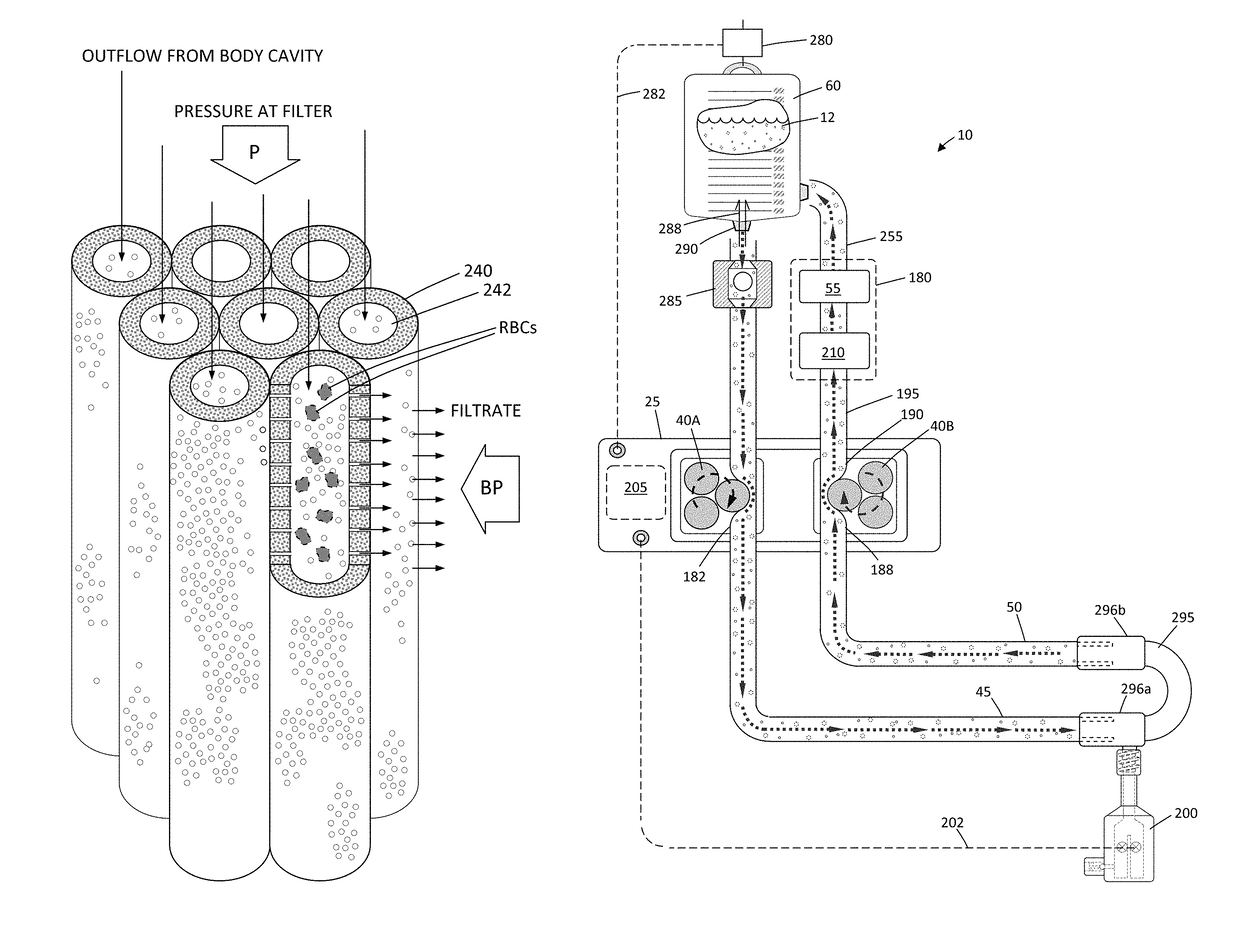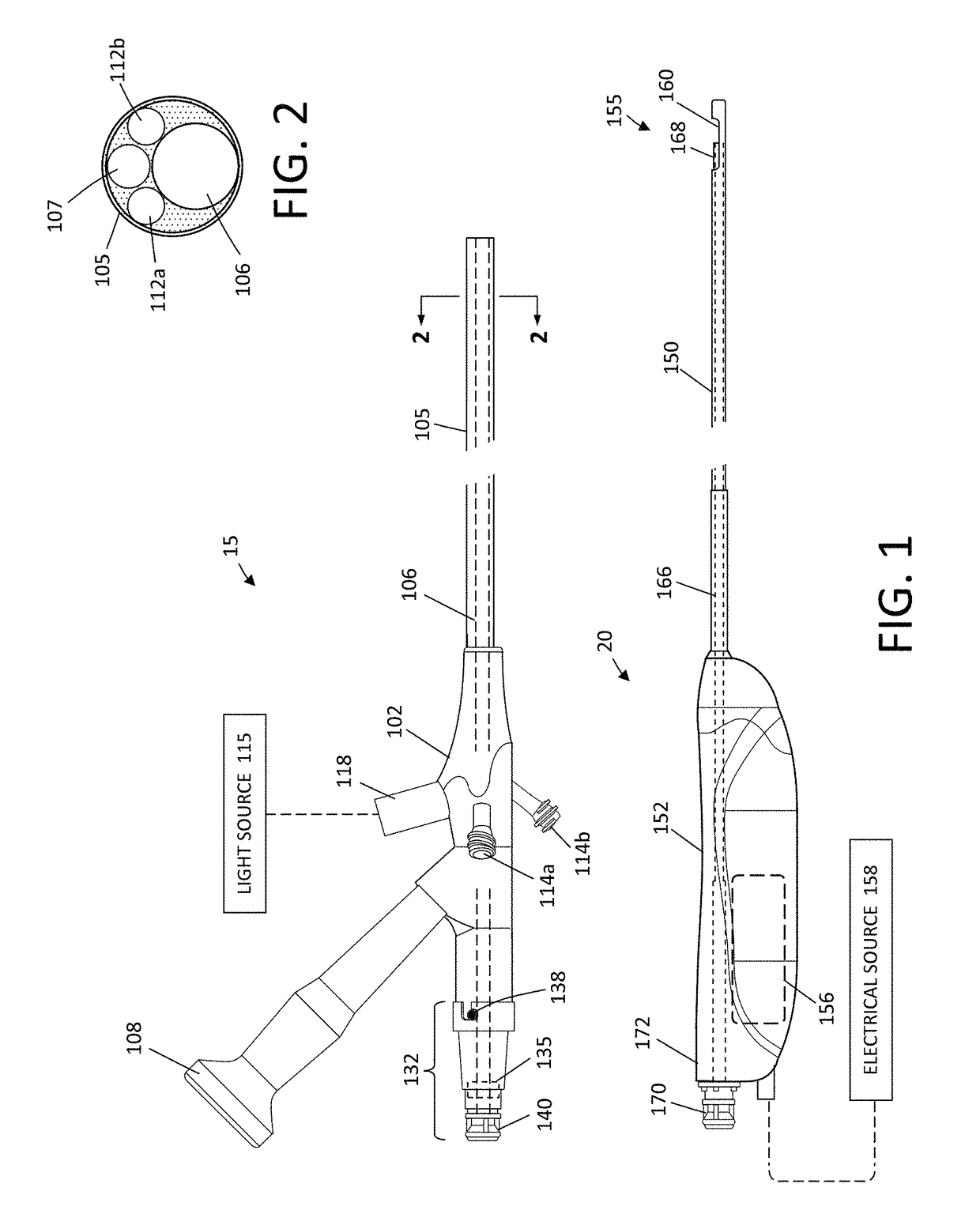Fluid management system and methods
a management system and fluid technology, applied in the field of fluid management systems and methods, to achieve the effect of preventing hemolysis of filtered red blood cells
- Summary
- Abstract
- Description
- Claims
- Application Information
AI Technical Summary
Benefits of technology
Problems solved by technology
Method used
Image
Examples
Embodiment Construction
[0037]FIGS. 1-5 illustrate various components of a hysteroscopic system for performing a myomectomy or fibroid removal procedure. The myomectomy system integrates a re-circulating fluid management system 10 corresponding to the invention together with a known type of endoscope 15 and a motor driven resecting device 20.
[0038]More in particular, the fluid management system 10 is adapted to use saline solution 12 as a distention fluid to distend the uterine cavity and uses a controller 25 and first and second positive displacement pumps (40A and 40B) to re-circulate saline solution through an inflow line 45, outflow line 50 and molecular filter 55 back to a saline source 60. The controller 25 optionally can be adapted to control various operations of the motor driven resection device 20, such as on-off modulation, the speed of rotational and / or reciprocation of a cutting element, and activation of one or more electrodes or another energy emitter for resection or coagulation. Further, t...
PUM
 Login to View More
Login to View More Abstract
Description
Claims
Application Information
 Login to View More
Login to View More - R&D
- Intellectual Property
- Life Sciences
- Materials
- Tech Scout
- Unparalleled Data Quality
- Higher Quality Content
- 60% Fewer Hallucinations
Browse by: Latest US Patents, China's latest patents, Technical Efficacy Thesaurus, Application Domain, Technology Topic, Popular Technical Reports.
© 2025 PatSnap. All rights reserved.Legal|Privacy policy|Modern Slavery Act Transparency Statement|Sitemap|About US| Contact US: help@patsnap.com



